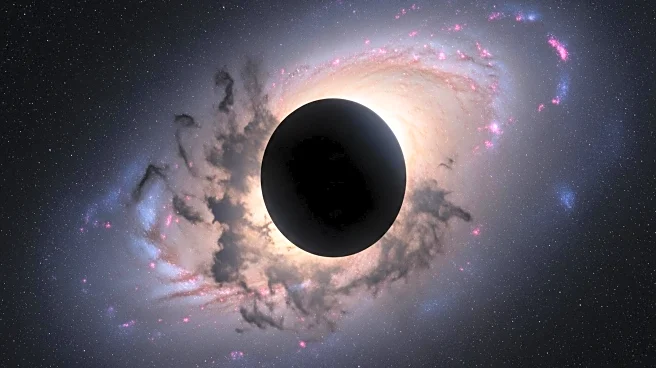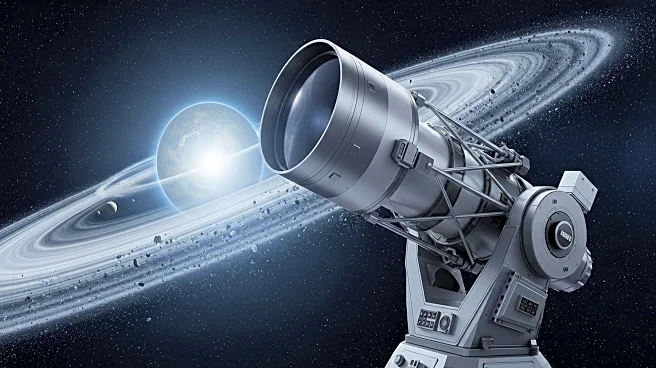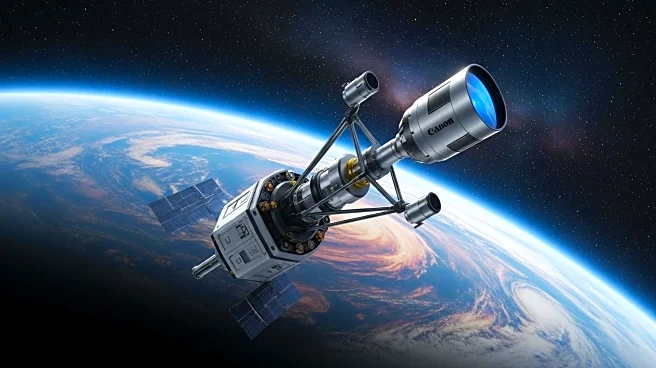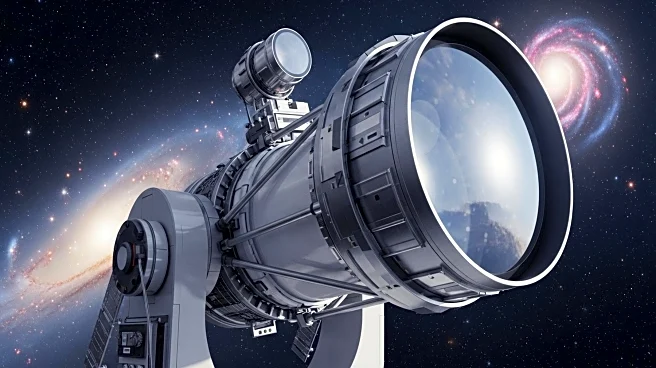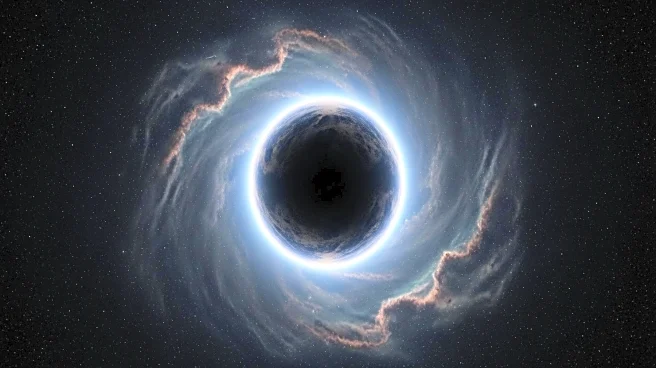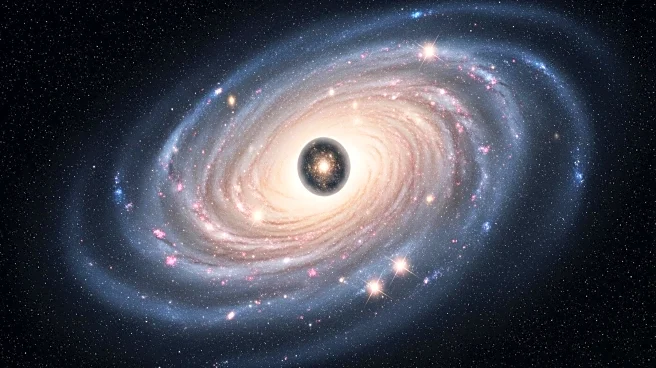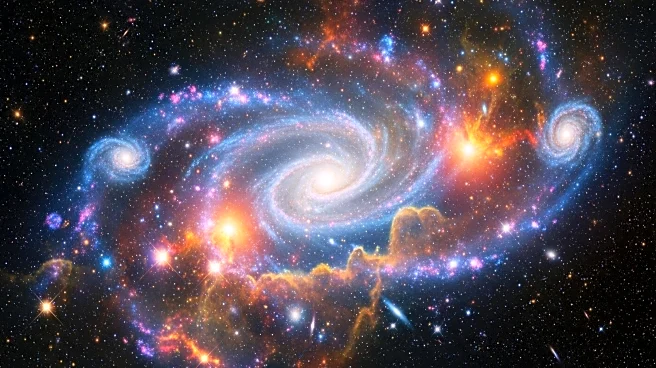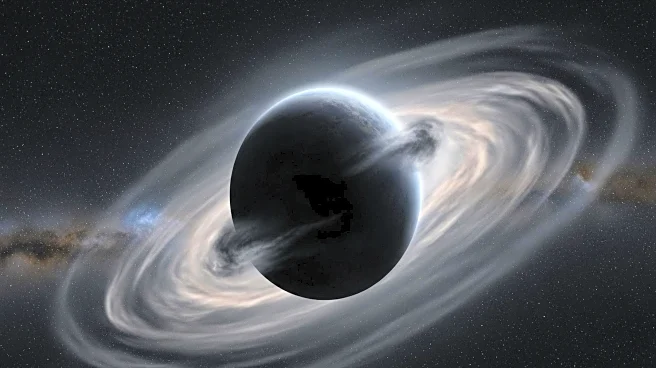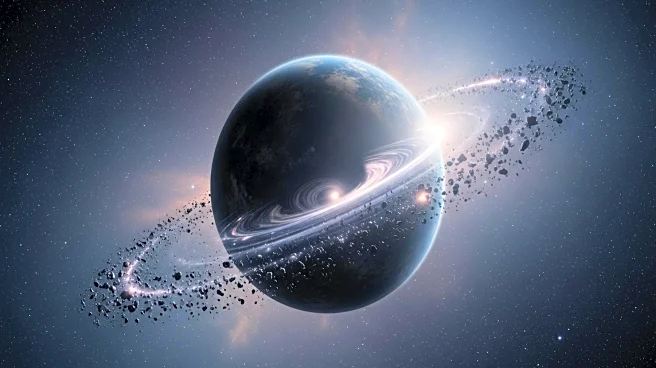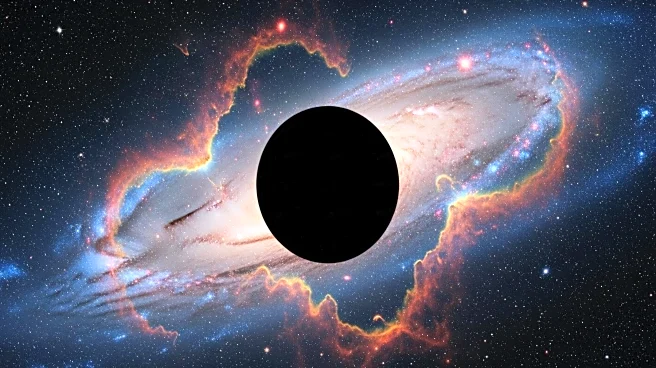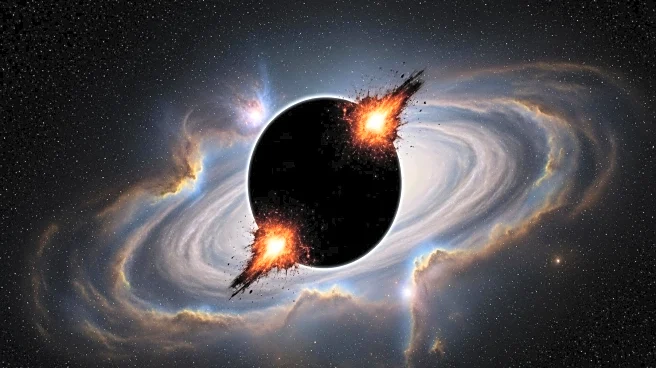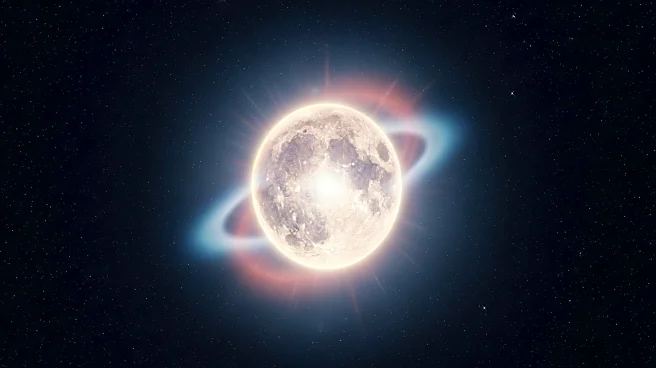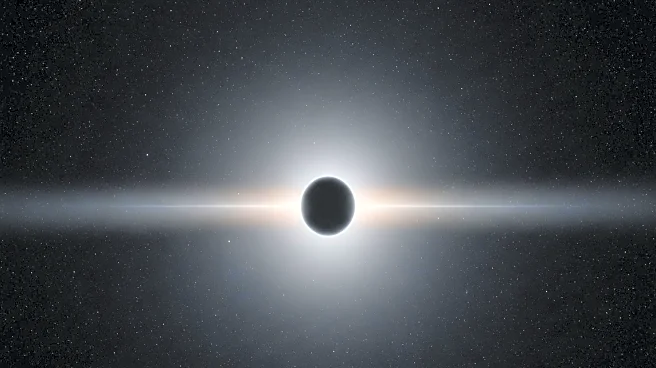What is the story about?
What's Happening?
Astronomers have discovered a rogue planet, Cha 1107-7626, in the Chamaeleon constellation, approximately 620 light-years away. This planet, which is not bound to any star, is consuming gas and dust at an unprecedented rate of six billion tons per second. Observations from the European Southern Observatory's Very Large Telescope and NASA's James Webb Space Telescope have revealed that Cha 1107-7626 is one of the lowest-mass free-floating planets known to host a disk and show active accretion. This discovery challenges the traditional understanding of rogue planets as cold, silent wanderers.
Why It's Important?
The discovery of Cha 1107-7626's rapid growth blurs the line between stars and planets, suggesting that some rogue planets may grow similarly to stars. This finding provides new insights into the formation and evolution of planetary-mass objects in the galaxy. Understanding the processes that drive the growth of rogue planets could have implications for the study of planetary formation and the conditions that lead to the development of planetary systems.
What's Next?
Future observations with the upcoming Extremely Large Telescope, equipped with the world's largest mirror, could enable astronomers to detect more rogue planets and study their star-like growth processes. This could lead to a better understanding of the early formation periods of rogue planets and their potential to host complex systems.
AI Generated Content
Do you find this article useful?
